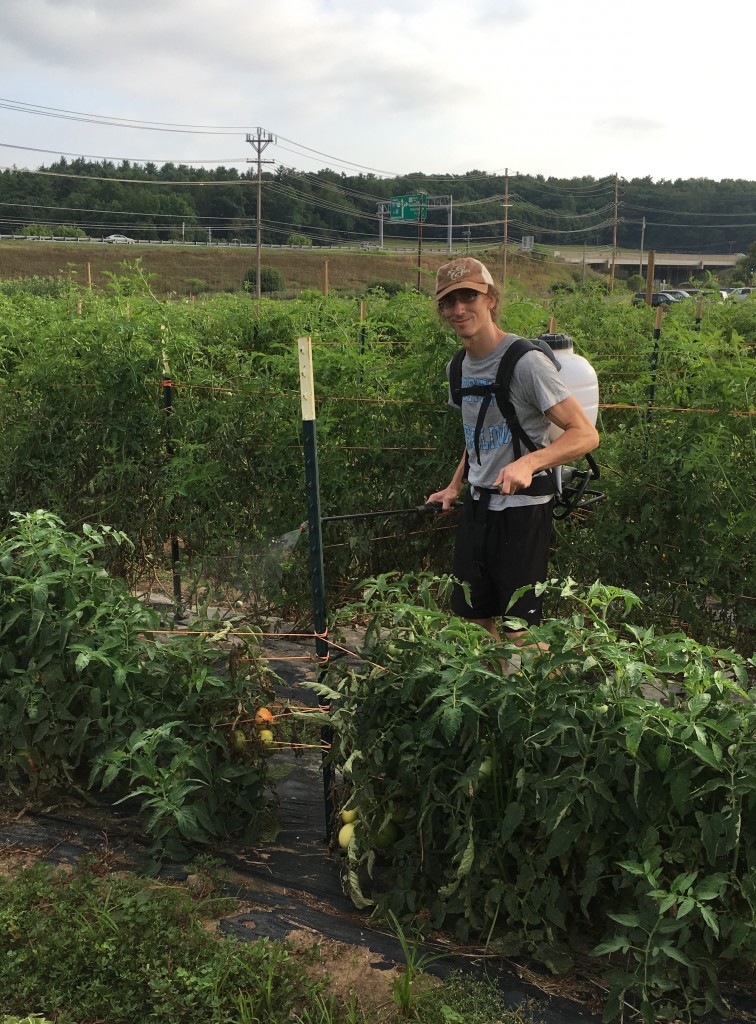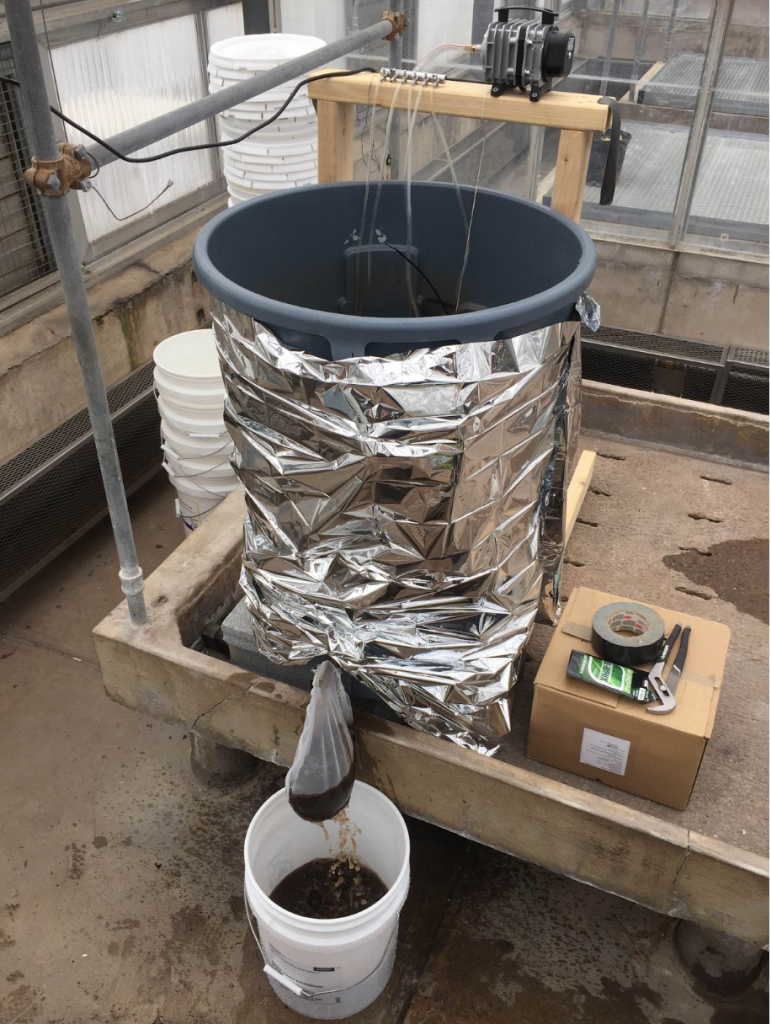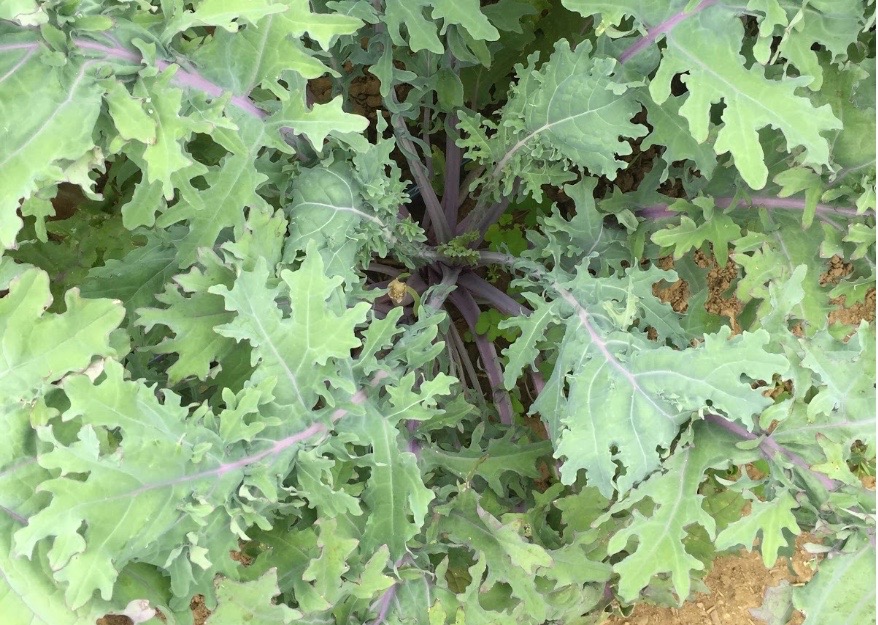 I am making compost tea, but no you definitely don’t want to try it. Unless that is, you might be suffering from reduced microbiome, or you feel you need a fertilizer boost. The kale and tomatoes seem to like it though.
I am making compost tea, but no you definitely don’t want to try it. Unless that is, you might be suffering from reduced microbiome, or you feel you need a fertilizer boost. The kale and tomatoes seem to like it though.
So what is a microbiome exactly?
Well, the way plants naturally get many of their essential nutrients is through partnering with microorganisms like bacteria and fungi, somewhat analogous to the way we rely on our gut bacteria to aid in digestion. The best known example is that some species of bacteria will form nodules on plants roots that provide them with nitrogen. (It was discovered this year that that process can actually occur on leaf surfaces as well.) Some species of fungi symbiotically attach themselves to plants’ root systems and provide phosphorus that the plant could not absorb itself, in exchange for the sugar the plant produces. These fungal root extensions also allow plants to absorb up to 10x as much water, and can create a network connecting plants through which they can share nutrients and information with each other, such as what diseases are nearby. This just scratches the surface of these microscopic ecosystems, really. There are decomposers, predatory protozoans, and many other weird little critters that are essential to the cycling of nutrients through the system. Unfortunately, many modern farming practices disrupt these microecosystems in ways that counterproductively increase our dependence on fertilizers and irrigation.
So what is compost tea and how does it fit in with all of this?
In keeping with the gut bacteria analogy,  compost tea is probiotics for plants. There are many different versions of how to make it and ‘recipes’ of what to include, but it is always a water-based concoction teeming with microorganisms. Some people spray it on their plants leaves, others water around the root systems with it. I do both. In the soil, the main purpose is to supplement and diversify the range of microorganisms present that can provide water and nutrients, as mentioned. When sprayed onto leaves, the main purpose is to coat them with microorganisms that will outcompete any pathogens for space on the leaf surface. All leaves are coated this way anyways, this process just adjusts the species mix.This is the a tricky part because coating is not effective for some pathogens, and you need specific species present to suppress others, which has led some researchers to deem it an ineffective process, but I believe it still has potential. In addition to providing a coating of microorganisms, the tea has nutrients that the plant can absorb directly as well, through both the leaves and roots, although this is just a bonus.
compost tea is probiotics for plants. There are many different versions of how to make it and ‘recipes’ of what to include, but it is always a water-based concoction teeming with microorganisms. Some people spray it on their plants leaves, others water around the root systems with it. I do both. In the soil, the main purpose is to supplement and diversify the range of microorganisms present that can provide water and nutrients, as mentioned. When sprayed onto leaves, the main purpose is to coat them with microorganisms that will outcompete any pathogens for space on the leaf surface. All leaves are coated this way anyways, this process just adjusts the species mix.This is the a tricky part because coating is not effective for some pathogens, and you need specific species present to suppress others, which has led some researchers to deem it an ineffective process, but I believe it still has potential. In addition to providing a coating of microorganisms, the tea has nutrients that the plant can absorb directly as well, through both the leaves and roots, although this is just a bonus.
The process of making the tea is pretty simple. I aerate water in a plastic bin using a pump and airstones intended for fishtanks. Then I add food for the microorganisms into the ‘tea bag’. I use oats because that is supposed to promote a fungally dominant tea, but people use everything from fish emulsions to molasses depending on what they are trying to cultivate. Finally, I add a source of microorganisms. Most often this is fully composted compost, but I am using a mix of worm castings and forest soil. I let the microorganisms “brew” and multiply overnight, and spray or water them onto some of our plants every week. Hopefully it keeps our tomatoes safe from blight, and I am testing the hypothesis that it will improve the nutritional content of our kale, but we’ll see!
Content and photos submitted by John Boujoukos.

